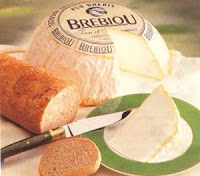Created by Karen Bianchi, Estero Gold is a raw milk, natural rind cheese and one of the first to come from this family’s closed herd of Jersey cows. Handmade in the style of an Asiago, reminiscent of a Montasio, two of the famous cheeses from the Swiss-Italian dairy country. Estero Gold is malleable when young, with notes of fruit and grass, and is dotted with small holes. The cheese is rich and buttery in flavor, developing nuttier notes as it ages. Named after a nearby river, it has a beautiful golden hue.
Made by Valley Ford Cheese Co., this cheese comes with a history as rich as its flavor. Purchased in the early 1900s, the farm has been family owned and operated ever since. Their herd of Jersey cows has grown over the years to about 450. In 2008 Karen Bianchi, the fourth generation on the farm, decided it was time to make cheese. Her goal was to produce something that pays homage to the family's Swiss-Italian roots while showcasing their fantastic Jersey milk.
Made by Valley Ford Cheese Co., this cheese comes with a history as rich as its flavor. Purchased in the early 1900s, the farm has been family owned and operated ever since. Their herd of Jersey cows has grown over the years to about 450. In 2008 Karen Bianchi, the fourth generation on the farm, decided it was time to make cheese. Her goal was to produce something that pays homage to the family's Swiss-Italian roots while showcasing their fantastic Jersey milk.


















































